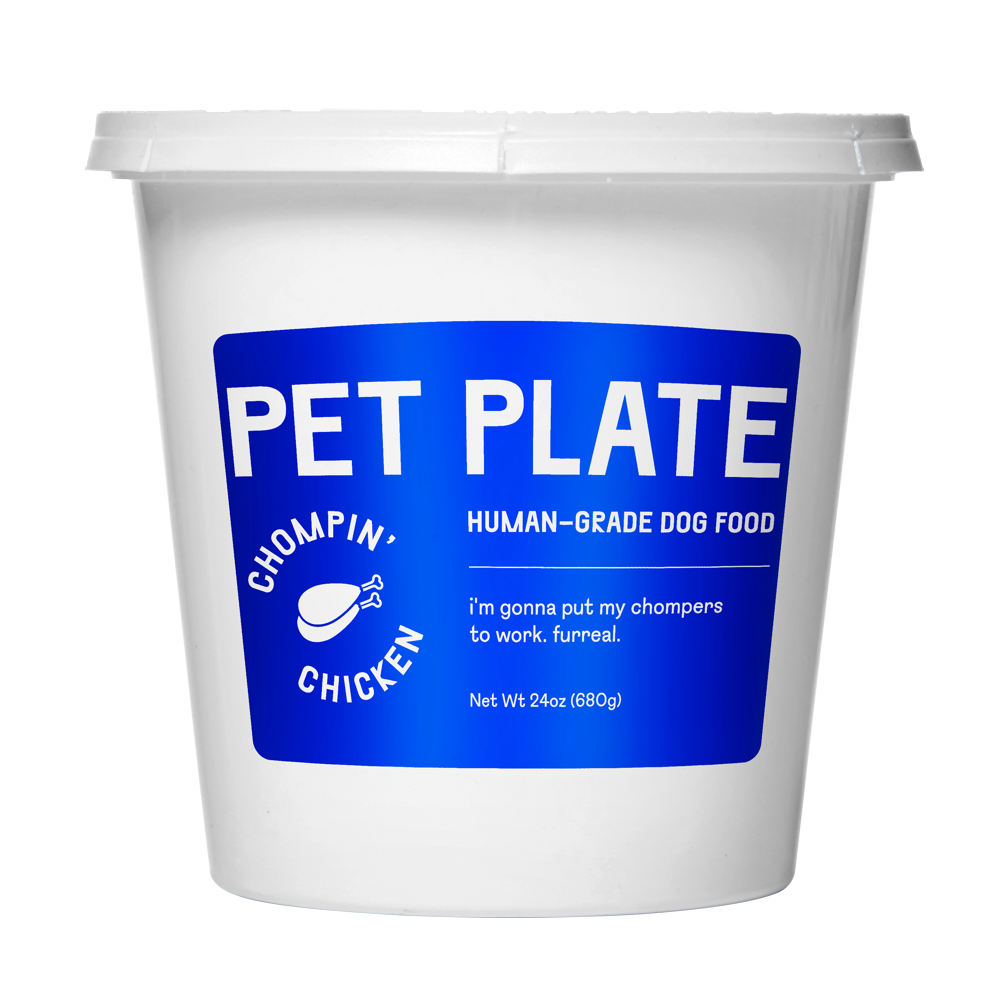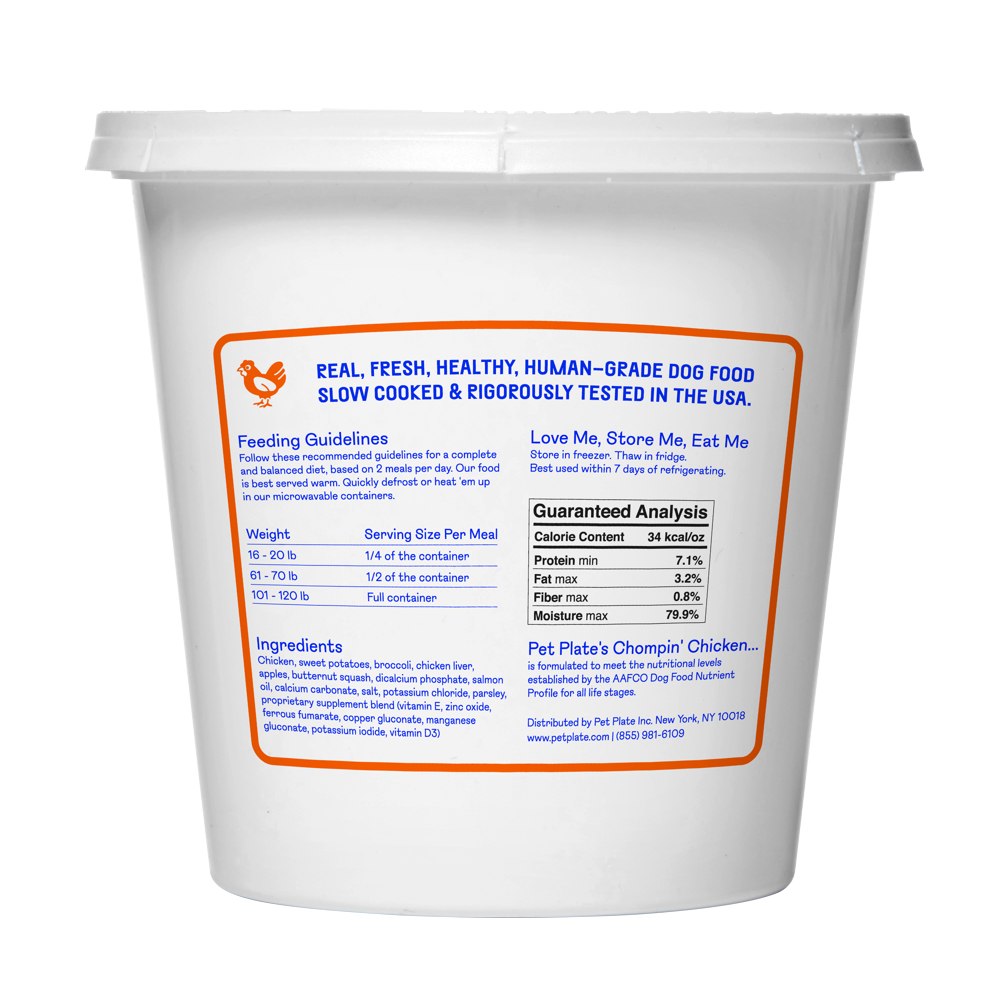
A Pet Plate container

The back of a Pet Plate container
You’ve decided to take your pet’s nutrition more seriously, but the food labels are confusing. We get it n’ we’re here to help. The good news is the FDA regulates pet food ingredients in a similar fashion to human food. The not as good news is that there is specific language in those regulations that allows companies to skirt the issue. We know you don’t have the time to learn ALL the ins n’ outs of FDA terminology – so we did it for you!
Here are some helpful tips to make things a bit easier the next time you need to navigate the pet food aisle:
CHECK THE ORDER
Just like hooman food – pet food labels are listed in order of weight with the most prominent ingredient listed first and the rest presented in decreasing order (by weight). Basically, if something is listed first – there’s a ton of it. Listed last? Likely very little is contained in the food’s recipe.
At the top of the list, you’ll often find ingredients like corn which you want to avoid. Corn is usually included in pet food because it’s an inexpensive filler. Unfortunately, it’s not great for your pet’s nutrition. Instead, look for pet food that lists meat first. Keep in mind, if you’re looking at dry dog food, there could be a valid reason that meat is listed second. It’s high in water content. With dry dog foods, you’re dealing with dehydrated content, which is often responsible for bumping the meat to 2nd place.
‘WITH CHICKEN’ or ‘BEEF FLAVOR’ GOOD, RIGHT?
NOT NECESSARILY. You want to give your doggo high-quality proteins, but when chicken and beef are listed on the ingredient label they’re not always the parts of the meat that you’re used to. In pet food, Chicken and beef are considered byproducts. What does this mean? It might include the heart, esophagus, tongue, and/or diaphragm. This is why it’s so important to buy from a company that values ingredient transparency.
The FDA has different standards for different product labels. Anything that includes “with” as part of the product name (such as Dog Food With Beef) only has to include 3% of that ingredient! Only 3% BEEF? REALLY? And anything with “flavor” in the title, like “Chicken Flavor for Dogs” only requires that the flavor is simply “detectable.” Sneaky, sneaky. And…yuck.
WHAT ABOUT ETHOS-WHATSITCALLED?
Yeah. We can’t pronounce it either.
Like hooman food – watch out for unpronounceable additives. If you don’t want to give your pet chemical preservatives that you wouldn’t feed yourself (BC gross) avoid ingredients like:
- BHA (butylated hydroxyanisole)
- BHT (butylated hydroxytoluene)
- Ethoxyquin – especially dangerous if swallowed or touches skin
HOW DO IF IT’S THE GOOD STUF
The short answer is: you can and you can’t.
The Association of American Feed Control Officials (AAFCO) manages a list of minimum requirements for pet food nutrition. The word to keep in mind there is: minimum. Pet food isn’t nearly as heavily regulated as hooman food, so those minimums are lower. This allows some brands to get away with slapping a “premium” label on a sub-par food-quality, which is why you can’t always trust just the pet food label.
So what’s a conscious pet owner to do? Do your research (you’re reading this article, so you’re already nailing it!). Find a company you trust to use high quality ingredients.


